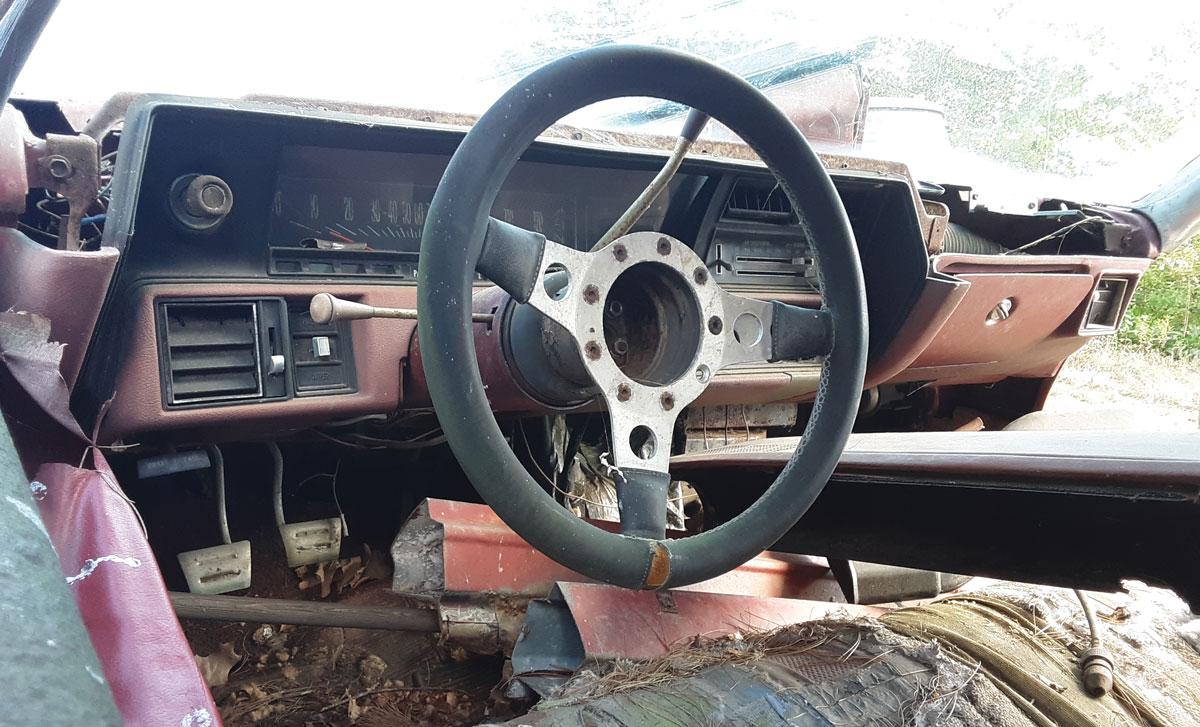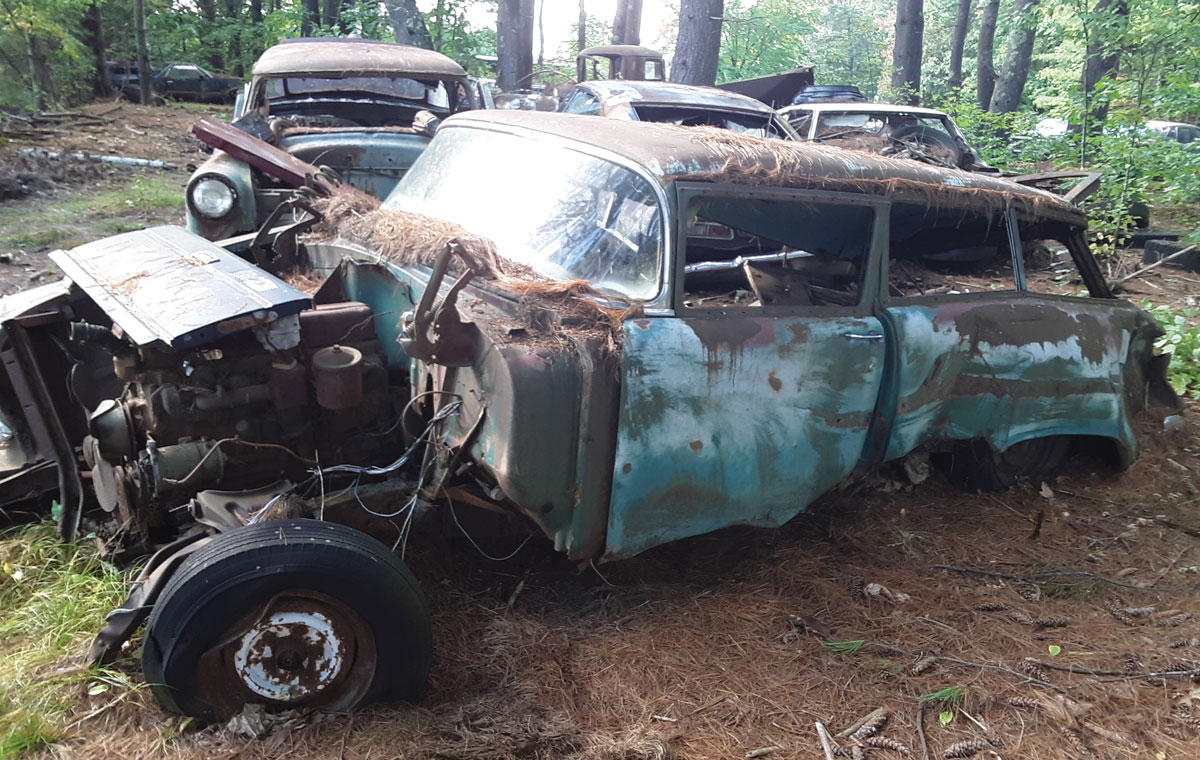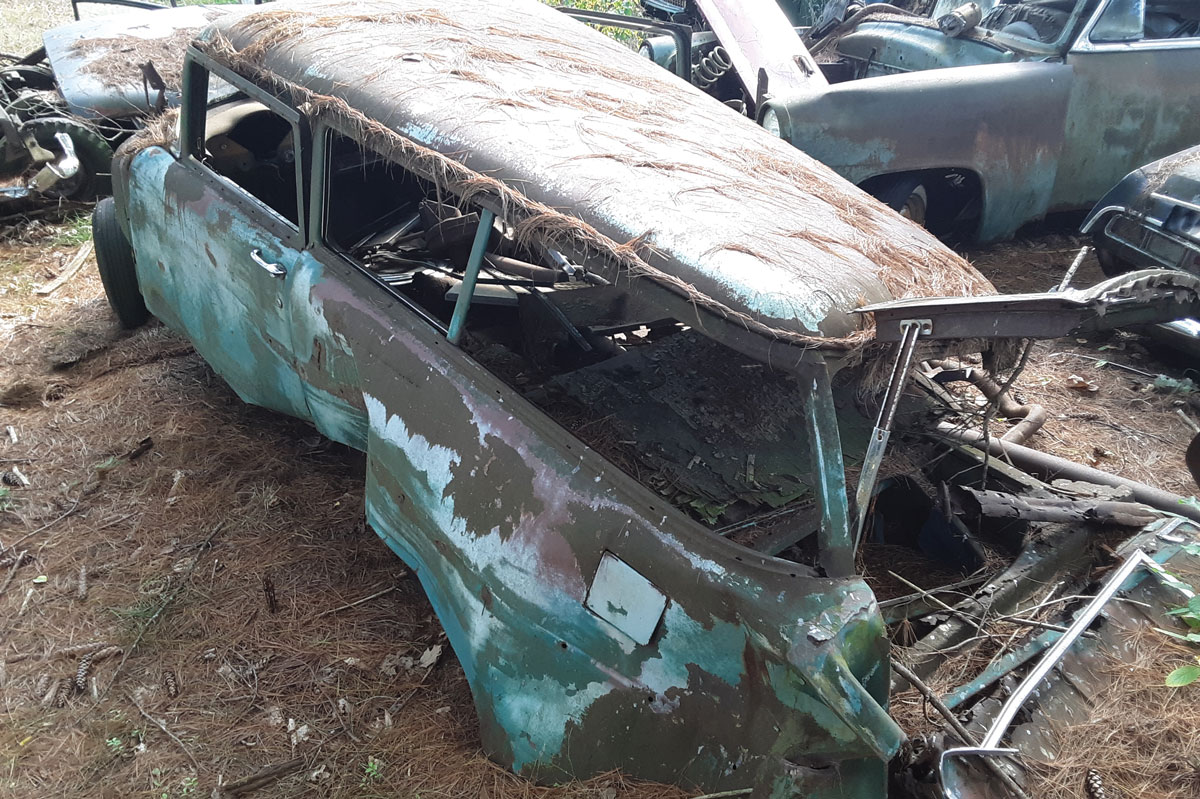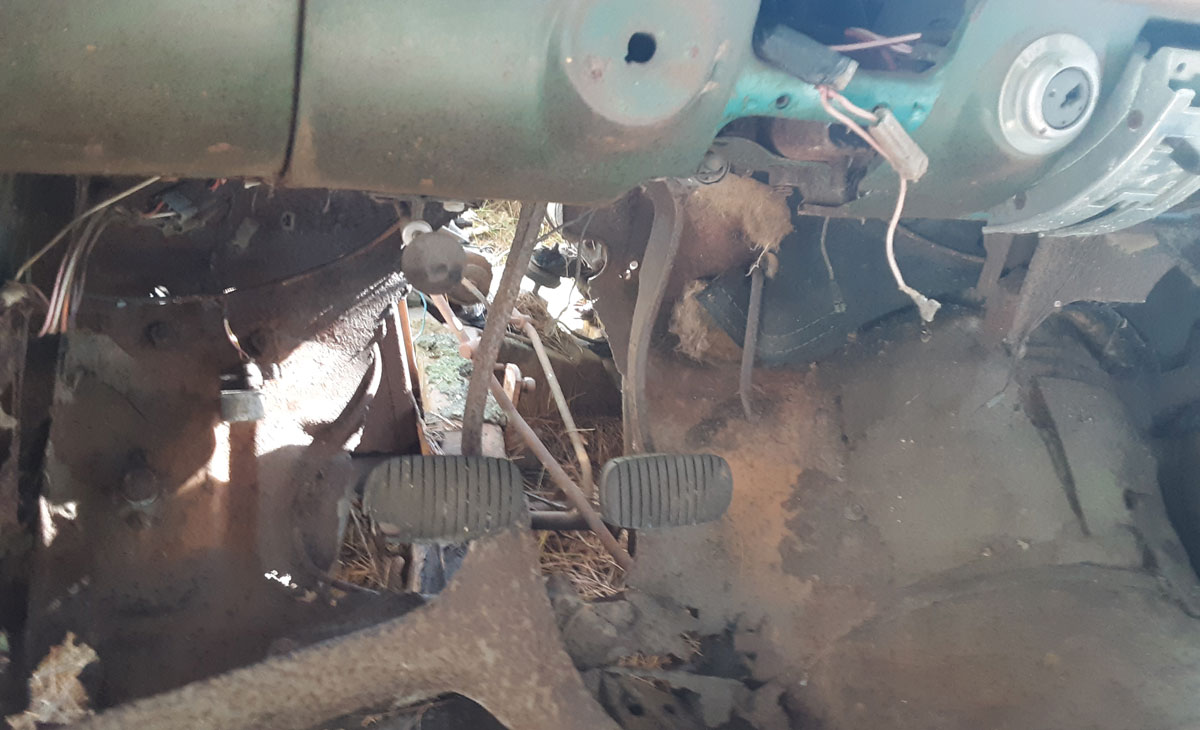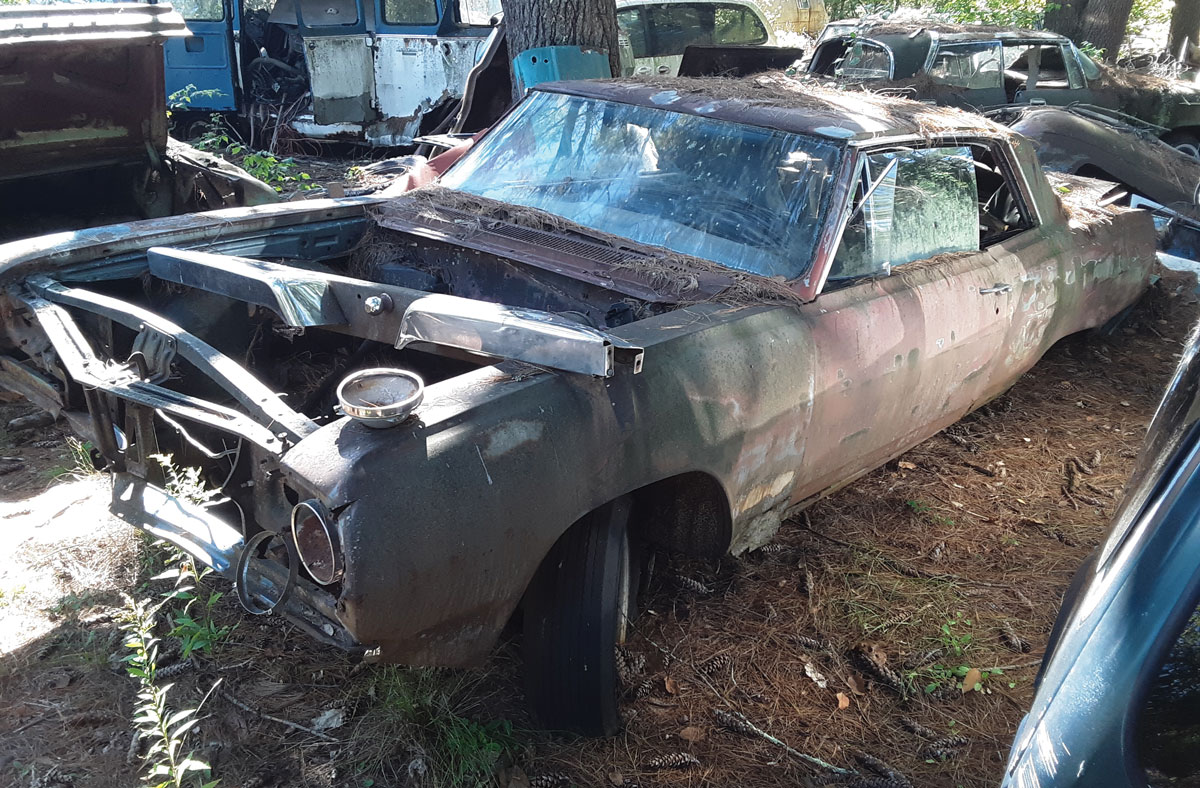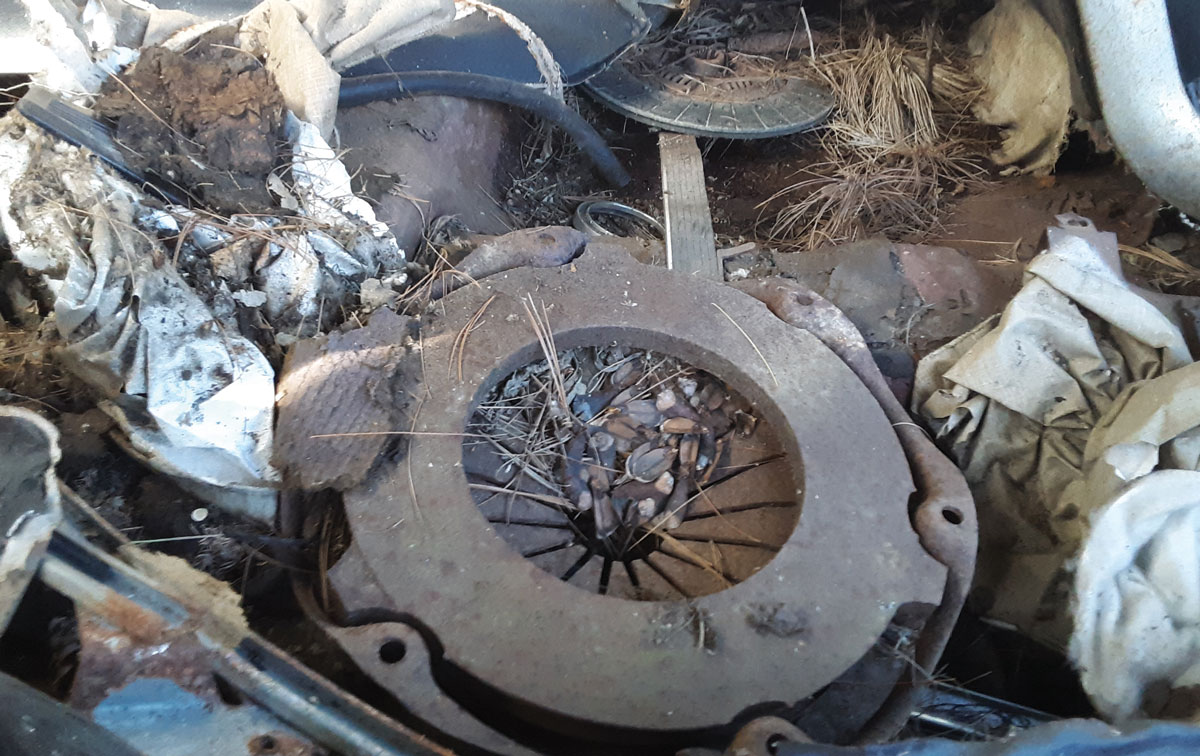 BOWTIE BONEYARD
BOWTIE BONEYARDInTheGarageMedia.com
BY Steve Magnante  Photography by the Author
Photography by the Author
 Photography by the Author
Photography by the Author
I
t’s time once again to venture forth into the Bowtie Boneyard. Here, we visited Bernardston Auto Wrecking (413-648-9300) in Bernardston, Massachusetts, where proprietor Dale Hastings runs a quiet but successful operation amid the pine trees and wild bears of the New England forest.
Our review was marked by a large number of manual transmission–equipped Chevys, just a few of which are presented here. Manual transmissions increase the connection between driver and car and also generally increase the fun factor. Let’s dig in …
